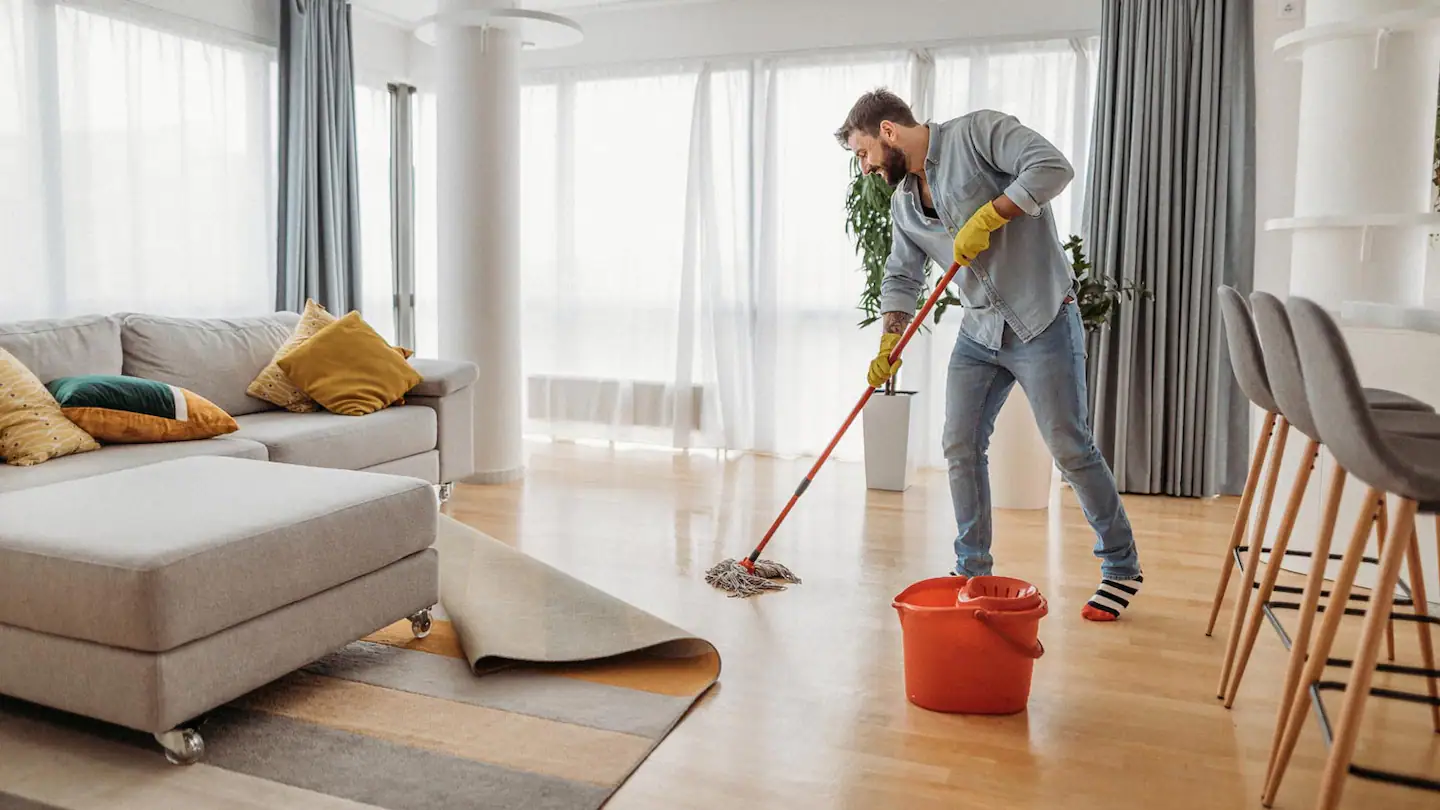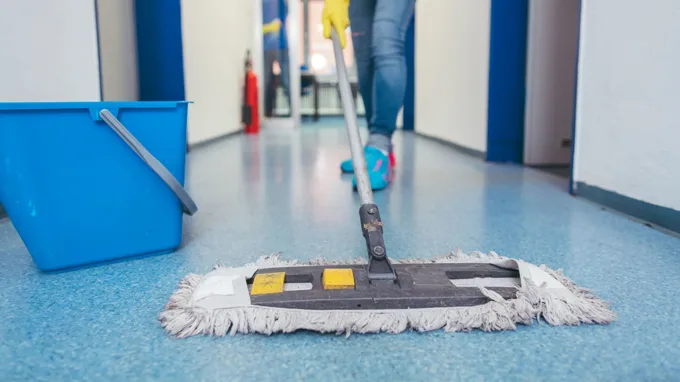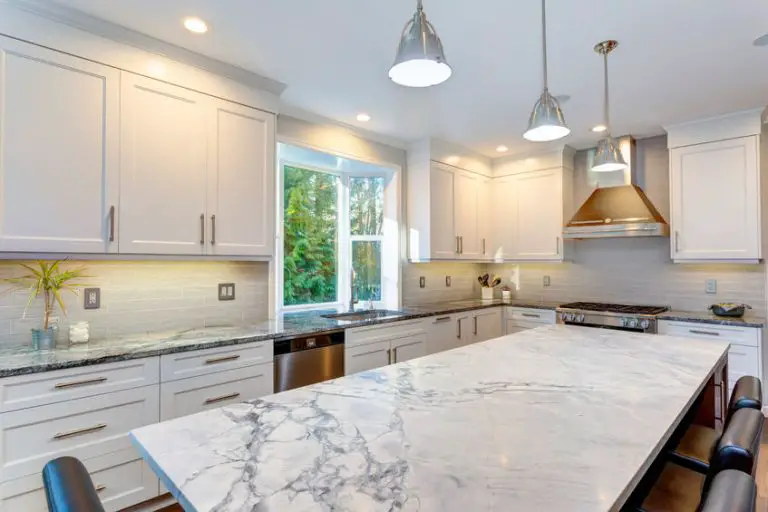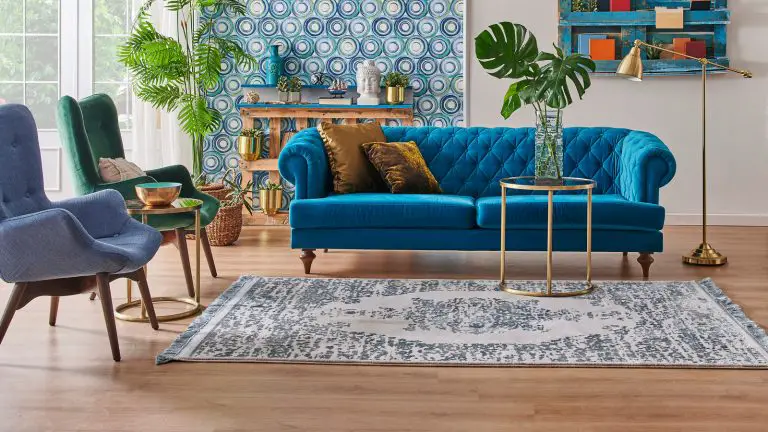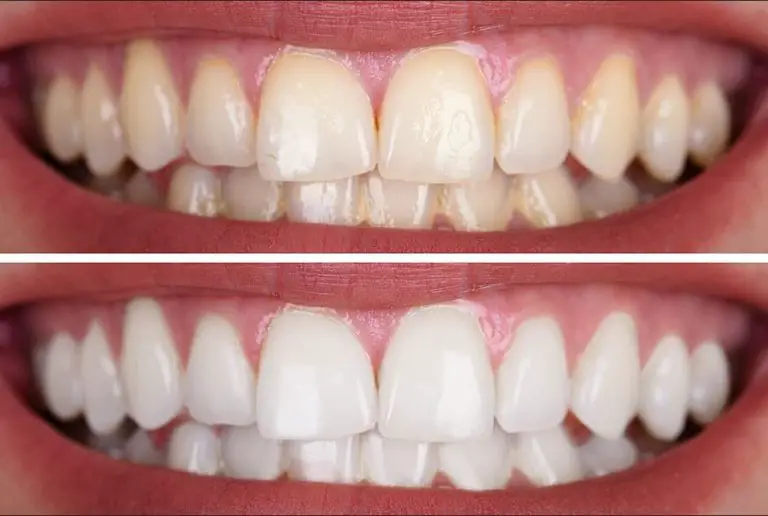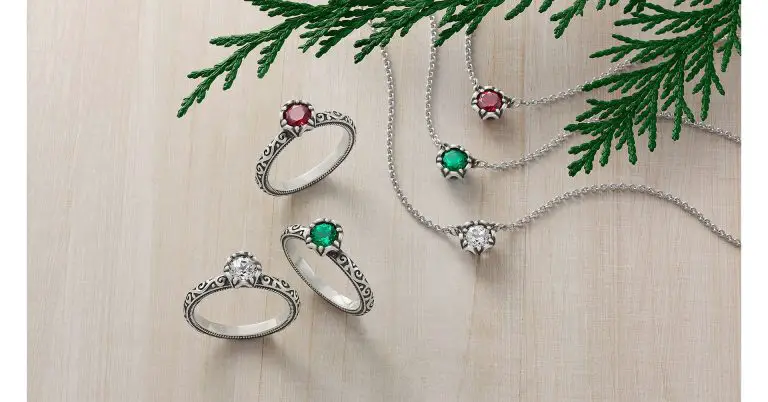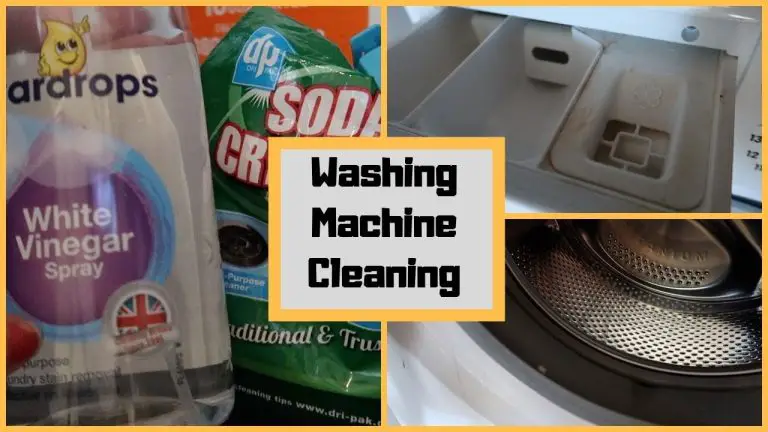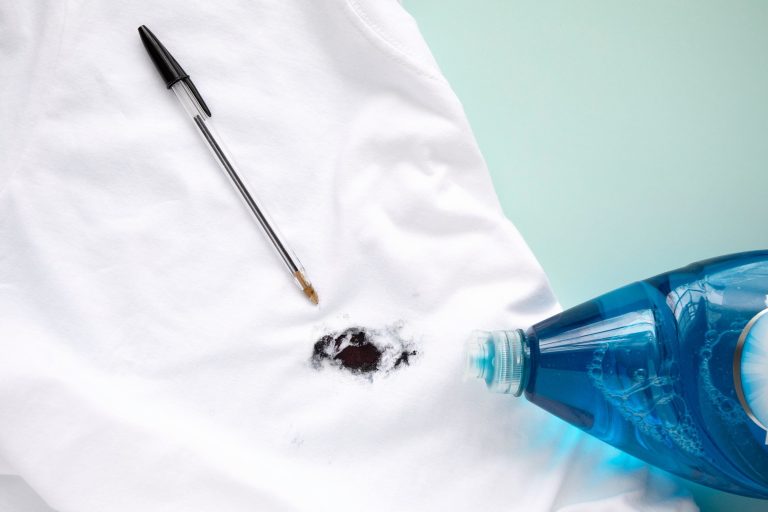How to Clean a Floor After Removing Carpet
Removing carpeting can be a long and tedious process, but it’s worth it in the end when you have beautiful new hardwood or tile floors. However, before you start decorating your newly-refinished floors, you need to clean them thoroughly. This is especially important if the floor has been covered with carpet for some time because dirt, dust, and allergens can accumulate underneath the rug.
Cleaning a floor after removing carpet requires more than just vacuuming; here are some tips on how to properly clean any type of floor after taking up an old rug.
- Remove all of the carpet and padding from the floor, Carefully cut the padding into small strips and roll it up for easy disposal. If you’re not disposing of the carpet yourself, make sure to hire a professional to do so
- Vacuum up any dirt or debris that is left on top of the floor, Make sure to get into corners and along baseboards with your vacuum cleaner attachment for an extra-thorough cleaning job
- Sweep across your entire floor with a broom or dust mop to pick up any remaining dirt, dust, pet hair, etc. before mopping begins
- Mop your floors using warm water mixed in with a gentle soap solution specifically designed for hardwood floors (or whatever type of floor you have). Start at one corner of the room and work your way out working in long strokes until you cover every inch of the surface area twice over
- Allow time for everything to dry completely before moving furniture back onto it or replacing rugs or carpets if desired!
Credit: cleancurious.com
How to Clean Wood Floors That Have Had Carpet Over Them
If you’ve recently removed the carpet from your wood floors, you may be wondering how to properly clean them. Carpet can leave behind dirt and debris that need to be removed before the flooring is safe to walk on. Fortunately, there are a few simple steps you can take to make sure your wood floors look as good as new after being covered by carpet.
The first step in cleaning wood floors that have carpet over them is vacuuming. Use an attachment with a soft brush head or even an upholstery tool for the best results. Vacuum all of the areas where the old carpet was located and any surrounding areas as well.
This will help remove any dust or particles left behind when the carpet was removed. Once you’ve finished vacuuming, use a damp mop or cloth to wipe down the surface of your flooring. You don’t want it too wet; just use enough water so that it doesn’t dry out quickly while you work on one section at a time.
Make sure not to saturate the wood; this could lead to warping and other damage! When mopping, start at one corner of the room and move towards another side in straight lines until everything has been wiped down thoroughly.
The next step is removing any stains caused by pet urine, food spills, etc., which may have been absorbed into your wooden boards during their time under carpets or rugs. To do this mix equal parts white vinegar and warm water in a spray bottle then spray onto affected areas, wait 5 minutes before using a scrub brush/sponge soaked in the same solution, and rinse with fresh warm water. For more stubborn stains try using baking soda paste (mix 1 part baking soda and 3 parts warm water) applied directly onto the stain; let sit 10 minutes then scrub with nylon brush/scrub sponge then rinse off with fresh warm water.
If these methods fail seek professional advice from home improvement store personnel who are knowledgeable about specialty cleaning products designed for removing tough stains from hardwood floors. Finally, apply polyurethane sealant if desired- Polyurethane sealants add extra protection against wear & tear plus they also provide shine & luster making your flooring look like new again!
How Do You Prepare a Floor After Removing Carpet?
If you’ve been thinking about replacing the carpet in your home, you may be wondering how to prepare the floor for a new look. Removing old carpet is just the first step of many in giving your floors a fresh start. In this blog post, we’ll go over some tips on how to properly prepare your floors after removing carpet so that they’re ready for whatever comes next!
First, make sure all of the old carpet and padding are completely removed from the area. It’s best to use an industrial-grade vacuum cleaner or shop vac to ensure that no fibers or otherwise remain attached to your subflooring. Once everything has been cleared away, it’s time to begin cleaning and prepping the surface.
Start by sweeping up any remaining dirt and debris with a broom and dustpan before using a damp mop to remove any leftover residue from glue or other adhesives used during the installation of the previous carpets. You can also use mineral spirits if necessary but be sure not to get it on anything else as this material is highly flammable! Next up is checking for damage caused by water or other liquids seeping into sections where there was once wall-to-wall coverage; replace any warped boards and repair cracks with wood filler before sanding them down smooth so they don’t interfere with laying down new flooring materials later on.
Make sure you also check underneath door thresholds since these spaces often trap moisture which can lead to mold growth if left unchecked. Finally, inspect all nails/staples used during installation – pull out any that have come loose over time or are sticking out above surface level because these will impede proper installation when laying down new materials too close together (which could cause permanent damage). If needed add additional screws along seams between boards as well as within each board itself when possible in order to give extra support while working around tight corners etcetera!
Once all of those steps are completed you should have successfully prepared your floor after removing old carpets – now it’s time to move on to selecting what type of replacement material will work best for your project needs; whether its hardwood planks laminate tiles vinyl sheets etcetera – good luck!
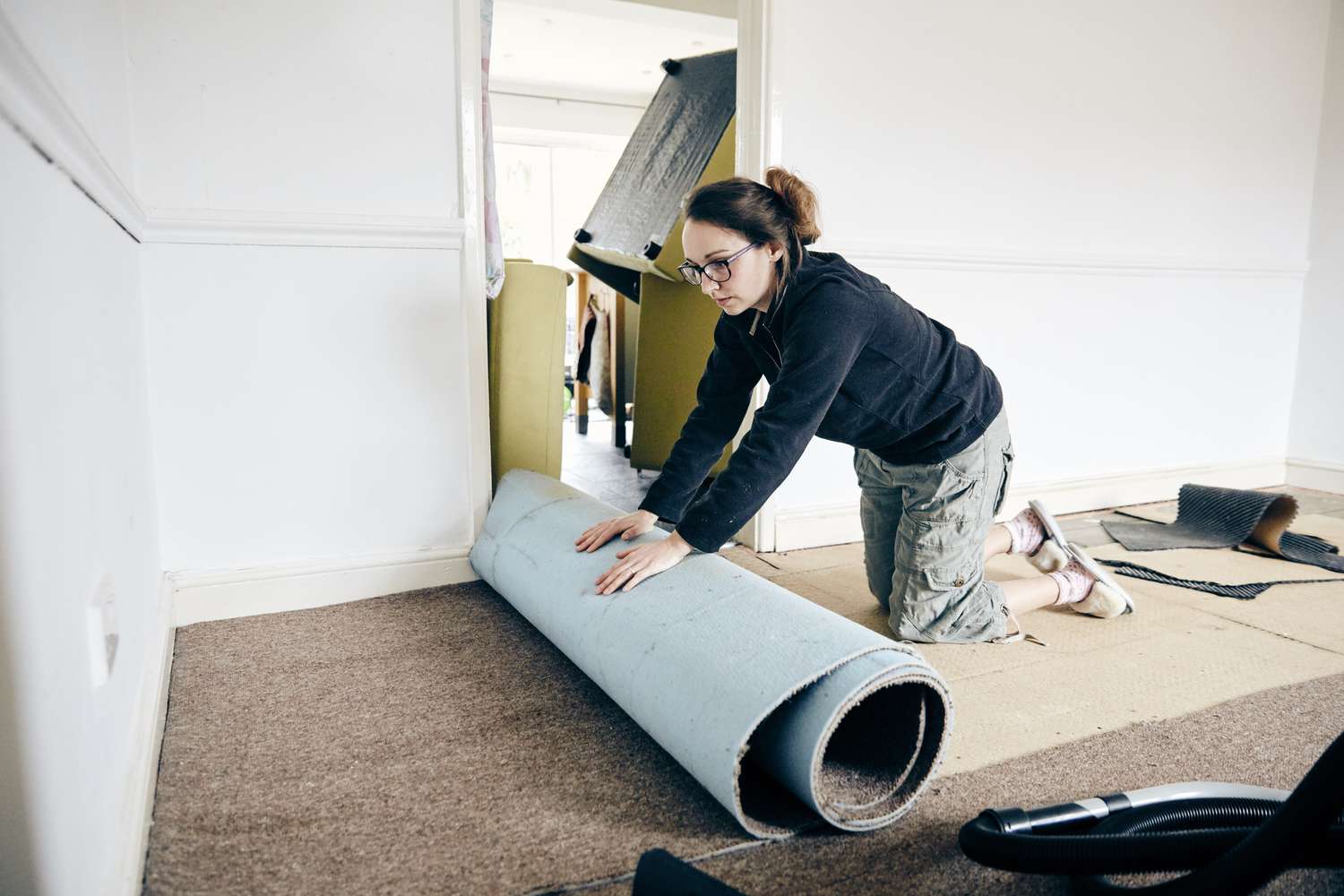
Credit: www.thespruce.com
How Do You Clean Subfloor After Removing Carpet?
Removing old carpeting from a subfloor can be an overwhelming task. Fortunately, there are some steps you can take to ensure that the job is done correctly and your subfloor is as clean as possible. Here’s what you need to know about cleaning a subfloor after removing the carpet.
First and foremost, wear protective gear such as gloves and a face mask before starting the project. Carpet removal can create dust particles that may cause health problems if inhaled or ingested. Additionally, it’s important to open windows for ventilation in order to reduce any exposure to airborne particles or chemicals resulting from the carpet removal process.
Once you have adequately prepared yourself for the task ahead, it’s time to start cleaning up! Start by vacuuming away all of the leftover debris left behind after taking out the old carpeting – this includes staples, nails, tacks, and any other small pieces of material that were used when installing the original floor covering. In addition to vacuum cleaner work, use a broom handle with stiff bristles attached at its end in order to remove stubborn grime from deep within crevices in between boards along with harder-to-reach places beneath edges around walls where moldings are installed on top of floors for aesthetic purposes only
After sweeping away what dirt remains on top of floors, use warm soapy water mixed with a few drops of bleach (or another mild disinfectant) in order to apply directly onto surfaces being cleaned followed by scrubbing them down using either hand-held brushes or powered scrubbers like those seen in commercial janitorial operations.
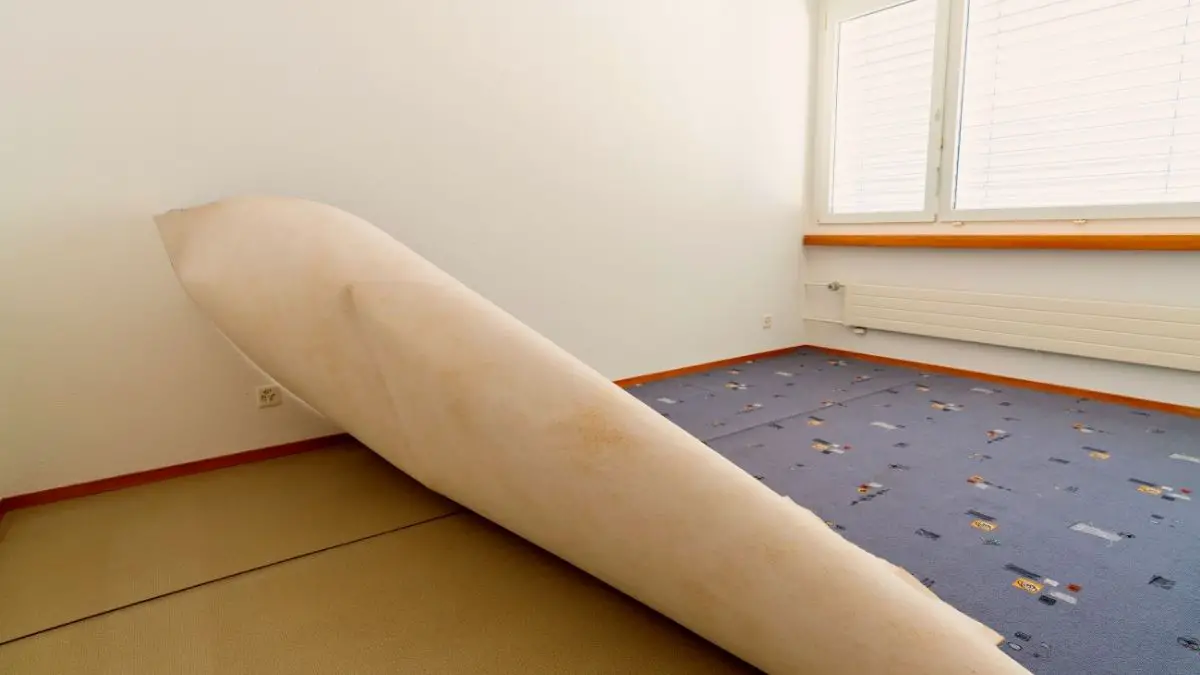
Credit: steamcleanqueen.com
How Do You Clean Hardwood Floors After Carpet Removal?
If you’ve recently removed the carpet from hardwood floors, chances are you’re looking for the best way to clean them. Removing carpet can reveal dirt and debris that has been trapped beneath it for years, so a thorough cleaning is essential in order to enjoy your new hardwood flooring. Here’s how to properly clean hardwood floors after carpet removal.
1. Vacuum: Start by vacuuming up any dust or dirt left behind from the carpet removal process. Make sure to use a vacuum with a brush attachment and go over the entire surface of your newly exposed hardwoods several times until all loose particles have been removed.
2. Sweep: Once you have finished vacuuming, use a soft-bristled broom or microfiber mop to sweep away remaining debris and stubborn bits of dirt on the floorboards between gaps in boards or along corners where carpets may not have fit snugly against walls, as well as around baseboards or other edges of furniture pieces that were sitting on top of carpets before they were pulled up. Be sure not to push too much pressure when sweeping; instead, just lightly brush across the wood surfaces with swift strokes in order to collect any lingering dust without damaging your flooring finish in any way.
3. Mop: Now that most of the large particles have been collected via sweeping and vacuuming, it is time for mopping! Fill a bucket with warm water mixed with gentle pH-neutral detergent specifically designed for wood floors ( never use harsh chemicals such as vinegar on wooden surfaces). Dip your mop into this solution and gently wring out excess liquid before carefully wiping down each individual plank one at a time using an “S” pattern motion—this will ensure maximum coverage while also avoiding streaks being created during drying time later on down the road. After mopping make sure all panels are dry by running through them once more using only plain tap water which should help remove any last traces of soap residue leftover from washing earlier.
4 Dry & Buff: To complete this task, grab yourself some lint-free cloths — preferably made out of cotton —and dab those onto affected areas focusing mainly on spots where liquids could still be present near joints between planks, etc… This process helps absorb unwanted moisture increasing evaporation rate exponentially thus helping achieve desired results faster than if left alone naturally air dry …
What to Do With Concrete Floors After Removing Carpet?
When you pull up the carpet and padding from your concrete floor, it can feel like a daunting task to figure out what to do with the bare concrete. Do you simply paint over it? Seal it?
Refinish it? The answer depends on how much time and effort you want to put into the project, as well as how long-lasting of a solution you are looking for. If you’re looking for an inexpensive, quick fix, then painting over your concrete may be the best option.
All that is needed is some primer and either acrylic or latex paint in any color of your choice. This will give your floors a fresh new look without having to take too much time or money. However, this does not provide protection against stains or wear and tear; if those are concerns for you then keep reading!
For more durable results than painting would offer consider sealing your floors instead. Sealing provides a protective layer that keeps dirt, grime, and water from staining the surface while also making them easier to clean. It also helps prevent cracking caused by temperature changes so if there have been issues with that before in your home then this might be worth considering!
You can buy sealers specifically designed for concrete at most hardware stores which makes application fairly easy – just make sure to follow all instructions properly when applying! Finally, if neither painting nor sealing appeals to you because they don’t quite give enough of an upgrade from what was previously there then refinishing could be another great option! Refinishing requires sanding down parts of the existing floor in order to smooth rough surfaces before applying multiple coats of polyurethane finish which adds shine back into dull areas while protecting against scratches and moisture damage too!
This process should only be done by professionals however since it takes skillful expertise plus specialized tools/materials in order to get good results here so unless one has prior experience working with polished stone surfaces I recommend leaving refinishing jobs up to professionals (which luckily many contractors nowadays offer services such as these). In conclusion, no matter what route one decides ultimately deciding upon what type their post-carpeted concrete floor solution should entail comes down to preference & budget – but regardless each path will guarantee satisfaction when seeing the finished product afterward given proper prep work beforehand & maintenance after installation is complete too!
Removing Old Carpet and Exposing Beautiful Hardwood Floors!
Conclusion
If you’re looking to give your home a makeover by replacing the carpet with hardwood or tile, the first step is to get rid of the old carpet. But that’s not all! Once it’s gone, you’ll need to clean the floor underneath it before putting down new material.
Cleaning up after removing carpet can be tricky, but don’t worry—we’ve got some tips for getting the job done right! First and foremost, vacuum any remaining dust and dirt from the subfloor. Then use a broom and mop with warm soapy water to remove any stubborn debris or adhesive residue left behind.
To really get into crevices, consider renting a steam cleaner—just remember to keep it moving so that moisture doesn’t seep into gaps in your floorboards. Finally, let everything dry completely before laying down new flooring materials; this will prevent warping or other issues caused by too much moisture in your floors. With these simple steps, you’ll have sparkling clean floors ready for their makeover in no time!
